SHOP DRY EYE CARE TODAY!
Use code VISIONARYEYE20 at checkout for 20% off!

If you’ve undergone LASIK or similar refractive surgeries like PRK or ICL and now suffer from persistent dry, red, or irritated eyes, you’re not alone. Dry eye symptoms are a common side effect after these procedures due to corneal nerve disruption that reduces tear production. This discomfort can significantly affect your vision satisfaction and overall quality of life. Understanding your options for relief and specialized care can help you regain comfort and improve your eye health.
Living with chronic dry eye symptoms after LASIK can feel frustrating, but relief is achievable. Many patients believe their discomfort is permanent, yet tailored treatments can effectively address the underlying causes of dryness and irritation. A comprehensive dry eye evaluation pinpoints the exact reasons for your symptoms, which may differ from person to person. With that information, your care plan is specifically designed for your unique condition, enhancing the likelihood of a successful outcome. This individualized approach ensures that treatment goes beyond simple symptom masking to promote lasting comfort.
Our advanced technology allows for a thorough assessment that goes deeper than traditional exams. Different factors such as tear quality, eyelid function, and inflammation are all carefully examined to guide your treatment path. Access to cutting-edge therapies means your care integrates the latest scientific advances for dry eye management. If you have struggled with redness, burning, or blurry vision post-surgery, specialized evaluation and treatment can change your experience. You have options to regain comfort and protect your vision.
Professional care for post-LASIK dry eye takes into account not only symptom relief but also prevention of further damage. Ignoring dry eye problems often leads to worsening discomfort and complications. Early intervention with targeted therapies increases your chances of a quick and effective recovery. If you feel your eyes are always dry or irritated months after surgery, scheduling a dry eye evaluation is a critical next step to end your discomfort.
Severe dry eye symptoms following refractive surgery are challenging but not untreatable. Advanced therapies available today directly target the causes behind the dryness, rather than simply lubricating the eye surface. These methods include intense pulsed light (IPL), low-level light therapy (LLLT), radiofrequency (RF), and specialized treatments like TearCare. Such technologies work synergistically to reduce inflammation, improve tear film stability, and stimulate natural tear production. Through these innovative approaches, even persistent, difficult cases of dry eye can be brought under control.
For many who have tried over-the-counter drops without success, these clinical treatments represent a major improvement. Intense pulsed light, for example, can alleviate eyelid inflammation and improve gland function that is essential for a stable tear layer. Radiofrequency therapy gently heats eyelids to unclog blocked glands, a common cause of dryness. These treatments are non-invasive, often comfortable, and customized to your condition's severity. Not only do they relieve symptoms, but they also target the root causes of dry eye after LASIK and related surgeries.
With consistent treatment, many patients report significant reductions in eye redness, irritation, and discomfort. Eyes feel more naturally lubricated with fewer fluctuations in vision clarity. Advanced treatments help restore your eyes’ balance and function, increasing your confidence in returning to daily activities without suffering. If dry eye symptoms have persisted beyond the usual healing period, professional intervention with these therapies can help regain your eye comfort and health.
Persistent dry eye after LASIK doesn’t just irritate your eyes — it can also impair your vision quality. Tear film disruption causes fluctuating or blurred vision, glare, and difficulty focusing, which many patients find frustrating post-surgery. Addressing dry eye effectively can therefore directly enhance how clearly you see. By stabilizing your tear film and protecting the ocular surface, treatments help restore visual clarity and comfort. This benefits your overall satisfaction with your vision correction or alternative procedure.
Improved tear quality and quantity reduces irritation that affects your cornea and eyesight. Even subtle improvements in eye lubrication result in less fluctuating vision and reduced eye strain. Better tear film leads to smoother optical surfaces, enhancing the benefit you originally sought from LASIK or other refractive surgeries. Without properly managing dry eye, these visual disturbances can persist or worsen, undermining the success of your surgical procedure. Taking action to treat dry eye supports not only comfort but the ultimate goal of sharp vision.
Regular follow-up and maintenance therapies also contribute to lasting visual performance. As eyes heal and nerves regenerate, improvement in tear function helps maintain clarity over time. Long-term dry eye management protects your ocular health and prevents further damage or complications from chronic inflammation. Consequently, advanced dry eye treatment complements your refractive procedure, offering a holistic path to better vision and eye comfort.
Some patients with post-LASIK dry eye suffer from nerve damage that traditional treatments alone cannot fully address. For these cases, biologic eye drops such as platelet-rich plasma (PRP) serum, autologous serum, and Oxervate are valuable options to promote healing. These biologics contain natural healing factors that stimulate nerve regeneration, restore ocular surface integrity, and reduce inflammation. Their use can enhance recovery for those experiencing persistent symptoms due to corneal nerve impairment.
PRP serum is derived from your own blood, rich in growth factors that accelerate tissue repair. Autologous serum eye drops similarly leverage your body’s natural healing components to support corneal recovery. Oxervate is a prescription medication designed specifically to aid nerve healing and improve symptoms from neurotrophic keratitis and dry eye associated with nerve damage. Employing these advanced therapeutic options allows addressing the underlying causes at a cellular level, which is especially important after surgeries like LASIK.
Clinically supervised use of these biologic treatments has improved comfort and visual outcomes for many patients with refractory dry eye. They can be integrated into your customized care plan when nerve damage contributes to ongoing dryness or discomfort. Because post-surgical nerve issues require specialized attention, having access to these advanced options significantly expands the ability to provide meaningful relief. If you suspect your dry eye relates to nerve problems, exploring these therapies with an expert can make a substantial difference.
Your next step is to schedule a BIONIQS dry eye evaluation to identify the exact causes of your symptoms and explore the advanced treatment options available for you. This comprehensive exam harnesses the latest dry eye technology and diagnostic tools to deliver a personalized care plan targeting your unique needs. Whether your dry eye is mild or severe, or linked to nerve damage, professional evaluation and treatment can restore your comfort and help you regain confidence in your vision. Taking action now helps move beyond frustration toward lasting relief and healthier eyes.
Dry eye syndrome affects many residents in Northern Nevada, often disrupting daily activities and diminishing overall comfort. The dry climate in Reno, combined with frequent exposure to digital screens, aggravates this condition. Visionary Eye Center, guided by Dr. Jason Bolenbaker, offers tailored solutions that address the underlying causes of dry eye. Through advanced diagnostics and personalized care, patients find relief beyond typical over-the-counter options.
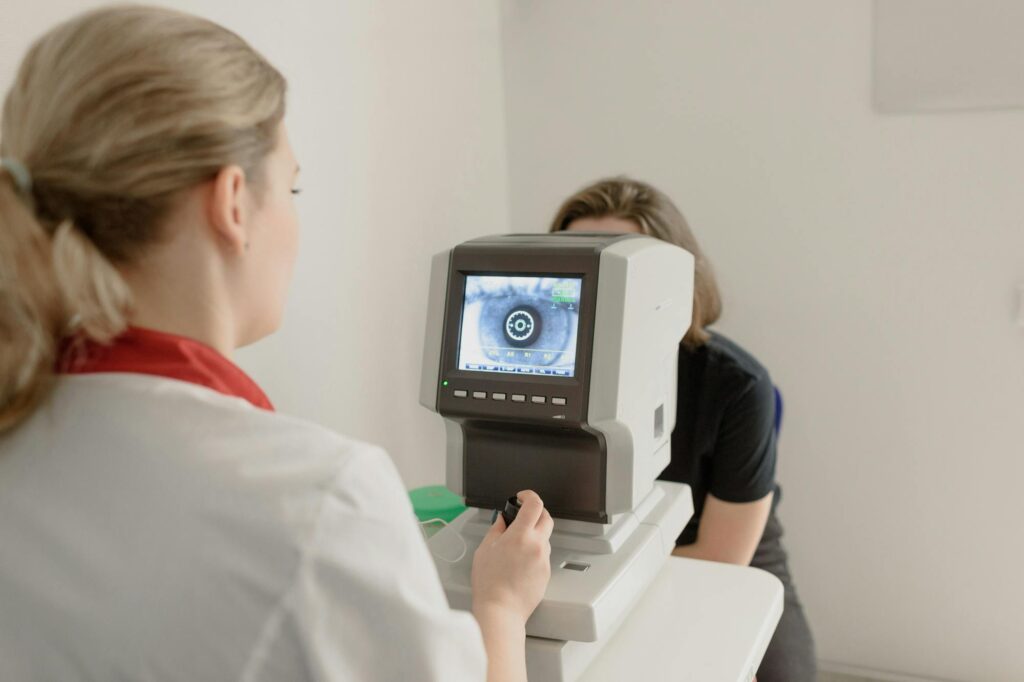
The increasing use of computers, smartphones, and other digital devices influences eye health, contributing notably to dry eye symptoms. Visionary Eye Center’s Digital Lifestyle Exam is designed to assess how extended screen time impacts your eye health and vision. This exam helps identify subtle signs of digital eye strain that might otherwise go unnoticed. Patients working in screen-heavy environments benefit from this specialized approach, as it directly evaluates factors causing their discomfort. Understanding the unique impact of digital usage enables the development of more effective management strategies.
In many cases, patients do not realize that their everyday screen use contributes significantly to eye dryness and irritation. The Digital Lifestyle Exam looks for signs of oil (meibomian) gland dysfunction and poor lid mechanics associated with reduced blink rates from screen use. These factors cause the tear film to evaporate faster, leading to dry eye symptoms. Armed with this information, the optometrist can recommend specific behavioral and therapeutic interventions tailored to each patient’s needs. This exam serves as an essential step for those seeking relief in Reno’s dry, technology-oriented environment.
By addressing screen-related challenges, this exam empowers patients to protect their eye health proactively. The personalized insights gained allow for targeted treatments that improve comfort and maintain visual performance. Scheduling a Digital Lifestyle Exam offers a clear path toward identifying the role of digital habits in dry eye issues. It is a foundational tool for those experiencing eye fatigue, irritation, or dryness linked to modern work and lifestyle demands.
For a dedicated and in-depth evaluation of all things related to dryness and discomfort, Visionary Eye Center offers its exclusive BIONIQS Ocular Surface Evaluation. BIONIQS stands for the 7 core areas of ocular surface disease: Bacteria, Inflammation, Obstruction, Nerve dysfunction, Immunology (allergies and autoimmune), Quality/Quantity of tear, and Structure (i.e., lid mechanics). This specialized exam ensures a thorough understanding of the condition to guide effective treatment.
Dry eye syndrome causes vary widely among patients, requiring a detailed and specific approach to diagnosis. The Visionary Eye Center utilizes its comprehensive BIONIQS evaluation to determine the exact cause of symptoms, whether related to tear quality, inflammation, meibomian gland dysfunction or nerve damage. This thorough assessment goes beyond surface-level treatment, ensuring care plans are scientifically grounded. Accurate diagnosis is critical for devising effective therapies that address the root of the problem rather than just the symptoms.
The evaluation process involves advanced diagnostic tools, like the Oculus Keratograph 5M, that measure tear production, assess gland functionality, nerve and eyelid function and detect ocular surface inflammation. Recognizing the diversity of dry eye conditions prevents misdiagnosis and avoids ineffective treatments. Patients benefit from a clear understanding of their condition, which sets expectations and informs treatment choices. This approach underscores the commitment to personalized medicine in eye care.
By tailoring diagnosis to individual patient profiles, the center enhances the precision of dry eye management. This step is essential in providing relief that is both enduring and meaningful for patients’ everyday lives. A proper diagnosis also helps guide follow-up care and adjustments in treatment as needed. Individuals seeking expert evaluation for chronic or persistent dry eye in Reno find this thorough approach especially valuable.
Dry eye treatment varies based on individual diagnosis, symptoms, and severity. The Visionary Eye Center offers customized treatment plans that may include dropless options like intense pulsed light (IPL), radiofrequency, punctal plugs, Zest or Rinsada biofilm treatments, TearCare or low level red light therapy. Pharmaceutical approaches include prescription eye drops, nasal tear stimulants and tear stabilizers. For more advanced cases, therapies such as regenerative autologous or PRP eye drops and scleral cover shells are incorporated to enhance healing and symptom relief. Patients benefit from a well-rounded approach that combines multiple modalities under expert guidance.
The Visionary Eye Center offers cutting-edge treatments such as IPL (Intense Pulsed Light), radiofrequency, and low-level light therapy. As IPL is the center’s workhorse dry eye treatment, as it is especially effective at addressing inflammation and meibomian gland dysfunction, the key drivers of evaporative dry eye. Highlighting this technology underscores Visionary Eye Center’s commitment to offering the most effective and technology forward solutions. Additionally, biofilm treatment options like Rinsada and Zest further expand the range of personalized care available to patients to address the symptoms of burning, itchy eyes from blepharitis (microbial overgrowth on the lids and lashes).
Prescription options like Vevye, Meibo, Xiidra, Cequa and Restasis can improve tear quality and reduce inflammation, addressing specific deficiencies detected during evaluation. Punctal plugs help conserve natural tears by blocking drainage ducts, increasing moisture retention on the eye’s surface. Radiofrequency heat therapy and lid hygiene treatments target meibomian gland dysfunction, restoring gland function and supporting healthier tear film stability.
The latest technological advancements enable the optometric team to monitor progress closely and adjust therapies for optimal outcomes. Patients appreciate individualized care that evolves with their condition, ensuring long-term management success. Investing in advanced treatments reflects the center’s dedication to offering Reno residents meaningful solutions for dry eye. Collaborative care between patient and provider fosters improved comfort and vision quality.
Managing dry eye often requires sustained effort and ongoing support due to its chronic nature. The Visionary Eye Center emphasizes continuous care through regular follow-ups and patient education. Empowering patients with knowledge about environmental triggers, lifestyle modifications, and proper at-home care is fundamental to maintaining symptom control. This support helps patients integrate effective habits that complement clinical treatments.
Education covers topics such as optimizing workplace ergonomics, managing screen time, and using humidifiers to combat dryness. Patients learn the importance of adherence to prescribed treatments and how to recognize symptom changes. This proactive approach minimizes flare-ups and preserves eye health over time. Ongoing communication ensures that treatments remain aligned with patient needs.
The center’s commitment to long-term patient well-being extends beyond the exam room. By fostering a partnership with patients, the team helps them navigate challenges associated with dry eye. This well-rounded care model improves quality of life and reinforces patient confidence in managing their condition. Continuous education and support are key components in achieving lasting relief.
Visionary Eye Center invites individuals experiencing dry, irritated, or fatigued eyes to schedule a Digital Lifestyle Exam or specialized BIONIQS ocular surface evaluation. Through detailed diagnosis and personalized treatment plans, patients obtain targeted solutions designed for their specific condition. The center’s combination of advanced technology, expert knowledge, and ongoing patient support makes it a trusted choice for dry eye care in Reno. Taking this step can lead to improved eye comfort and better daily vision, helping patients regain control over their eye health.
As parents, our children’s health is always a priority, especially when it comes to their vision. Identifying signs that may indicate the need for a pediatric eye exam Reno can make all the difference in ensuring your child’s eye health and supporting their overall development. Visionary Eye Center in Reno is committed to helping parents recognize these signs and understand the importance of regular eye exams for children.
Many children face challenges when it comes to reading or focusing on objects up close, but they might not always express it. You may notice your child squinting, holding books too close, or becoming frustrated with tasks that require near vision. These could be early signs of common vision problems such as myopia (nearsightedness) or hyperopia (farsightedness). Scheduling an eye exam in Reno early on can help detect any issues and provide timely interventions, which are important for your child’s academic success and well-being.
Additionally, if your child avoids activities that require detailed vision, like drawing or solving puzzles, this might indicate that they’re having trouble seeing clearly up close. Such behaviors highlight the need for an eye exam to ensure their vision is developing properly.
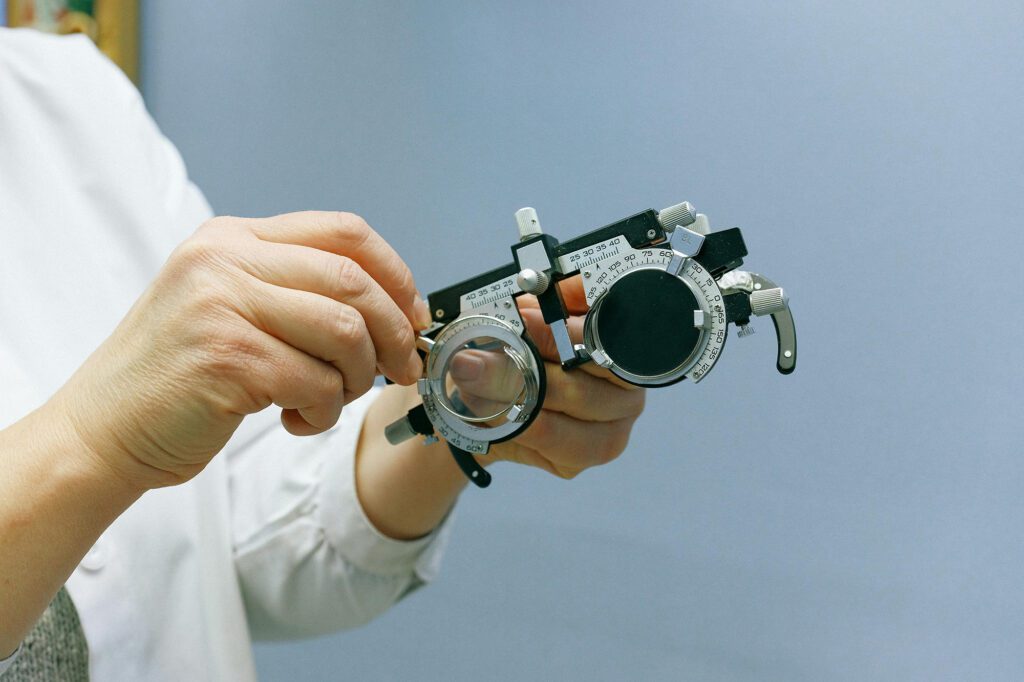
If your child frequently rubs their eyes or complains of discomfort in bright lights, these could be signs of eye strain or other vision problems. These symptoms often go unnoticed by parents, but they’re important indicators that an eye exam Reno may be needed. Regular pediatric eye exams can help detect any underlying conditions early, preventing long-term vision issues and supporting your child’s overall eye health.
If your child avoids tasks that require precise vision, such as reading small text or distinguishing between similar shapes, this could be a sign of an undiagnosed vision issue. These challenges may not just be a lack of interest but rather an indication that your child needs a thorough eye exam. Watching how your child performs in activities that demand visual accuracy can provide important clues about their eye health.
Frequent headaches or eye pain, especially after reading or engaging in visually intense activities, should not be overlooked. These symptoms often signal eye strain or other vision problems that require attention. Scheduling a pediatric eye exam in Reno can address these complaints early, preventing further discomfort and possible worsening of underlying conditions.
At Visionary Eye Center in Reno, we emphasize the importance of paying attention to your child’s vision. Regular eye exams for kids, even if they don’t show symptoms, play a key role in supporting their eye health and development. If you notice any of the signs listed above, don’t hesitate to schedule a pediatric eye exam near you. Our team is here to provide expert care and guidance for your child’s vision needs.
Early detection and treatment are essential for ensuring that your child’s vision supports their learning, growth, and happiness. Contact Visionary Eye Center for your eye exam in Reno and professional pediatric eye care tailored to your child’s unique needs.
Regular eye exams are a cornerstone of maintaining not just good vision but also overall health. At Visionary Eye Center in Reno, we understand that eye health is a critical aspect of your overall wellness. This article aims to shed light on why regular eye exams are essential for people of all ages and how they can help you make informed decisions about your eye care.
It's often said that prevention is better than cure, and this is particularly true for eye health. Many eye conditions, such as glaucoma and macular degeneration, develop silently, showing no noticeable symptoms in their initial stages. Regular eye exams are crucial in catching these conditions early. At Visionary Eye Center, our thorough eye exams are designed to identify such issues before they progress and cause irreversible damage. Early detection means early treatment, significantly improving the chances of preserving your vision and health.
Understanding the silent nature of many eye diseases underscores the importance of regular check-ups. Conditions like glaucoma, often referred to as the “silent thief of sight,” can progress unnoticed. By the time symptoms become apparent, significant vision loss may have already occurred. Routine eye exams can detect these conditions when they are most treatable.
Our eyesight changes as we age, making regular eye exams essential. These exams ensure that any changes in your vision are identified promptly. Whether you need a new prescription for your glasses or adjustments to your current eyewear, regular eye checks help keep your vision sharp and clear. At Visionary Eye Center, we can guide you through these changes, ensuring your vision needs are met at every stage of life.
As you age, you might notice changes in your vision. Maybe you're struggling to read fine print, or distant objects aren't as clear as they used to be. Regular eye exams allow us to track these changes and adjust your prescription, ensuring optimal vision and comfort.
Did you know that an eye exam can reveal much more than just eye-related issues? Your eyes are windows to your overall health, providing clues about systemic diseases like diabetes or hypertension. The blood vessels and nerves in your eyes can show signs of these conditions, often before other symptoms appear. Regular eye exams at Visionary Eye Center can therefore play a critical role in your overall health management.
The comprehensive eye exams at Visionary Eye Center can detect signs of diabetes, high blood pressure, and even cholesterol issues. This makes eye exams an integral part of your healthcare routine, offering insights that go beyond vision care.
For children, vision is closely linked to learning and social development. Regular eye exams are vital in ensuring that children have the visual tools they need to succeed in school and life. Vision problems can significantly impact a child’s academic performance, so catching and correcting these issues early is crucial.
Eye exams for children at Visionary Eye Center are about more than just checking for glasses. They're about ensuring that each child has a solid foundation for development and learning. Regular exams can help identify issues that might impede a child’s ability to read, learn, and engage in activities, setting them up for success from a young age.
We encourage you to prioritize your eye health by scheduling regular eye exams at Visionary Eye Center. These exams are a critical step in maintaining not only your vision but also your overall health. If it's time for an updated prescription or you're interested in exploring new eyewear options, our team is here to assist you. Remember, taking care of your eyes is taking care of your future.
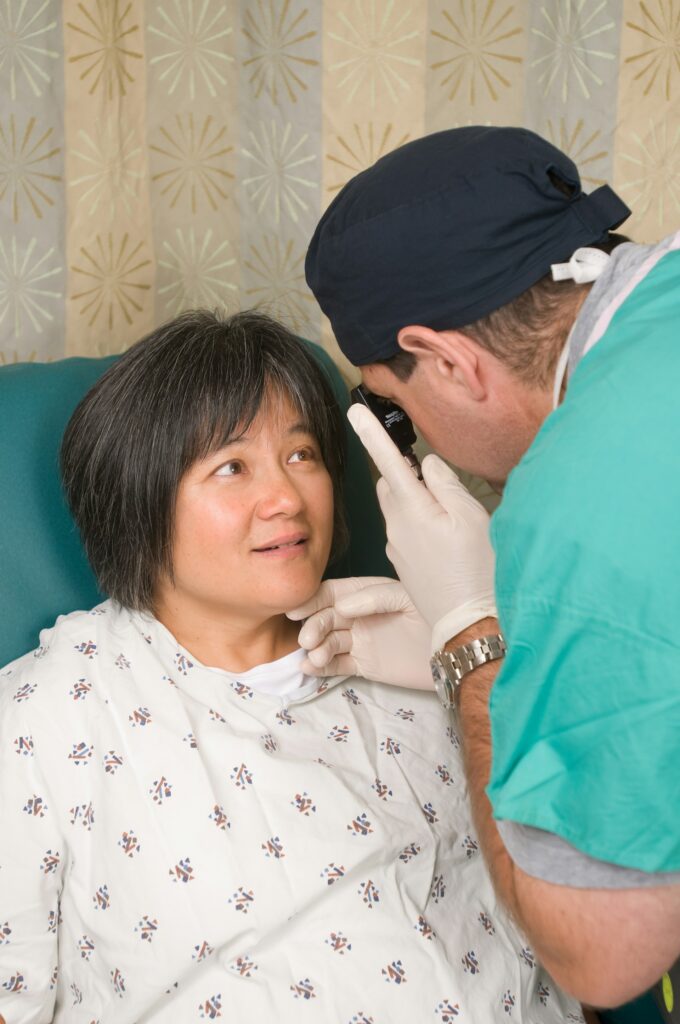
When it comes to vision correction in Reno, LASIK surgery is a widely known option. However, it's not the only path to clearer vision. For those who may not be ideal candidates for LASIK, there are several effective alternatives. Visionary Eye Center in Reno offers insights into choosing the right LASIK alternative based on individual vision needs.
ICL, a suitable option for individuals with thin corneas or chronic dry eye, involves placing a thin lens within the eye. This 20-minute procedure per eye is known for minimal side effects, although recovery can span several months.
ICL is not just a short-term solution. It offers long-lasting vision correction, making it a worthwhile consideration for those ineligible for LASIK.
Photorefractive Keratectomy (PRK) reshapes the cornea by removing its outer layers. It's a preferred choice for those with thin corneas who can't undergo LASIK. While the recovery from PRK can be longer and more uncomfortable, it's highly effective, especially for athletes or pilots.
The post-PRK recovery period may involve more discomfort compared to LASIK, but the outcomes in terms of vision correction are commendable.
Refractive Lens Exchange (RLE) replaces the eye's natural lens with a synthetic one. It's particularly beneficial for those over 40, addressing presbyopia and early cataracts. RLE suits individuals with strong prescriptions not correctable by LASIK.
RLE not only corrects vision but also prevents the future development of cataracts, offering a dual benefit for aging eyes.
LASEK surgery, similar to LASIK and PRK, is recommended for people with thin or flat corneas. The recovery period can be prolonged, with potential side effects like dry eyes and light sensitivity. Choosing between LASIK, PRK, and LASEK depends on individual eye structure, lifestyle, and vision goals.
After exploring these alternatives, it's crucial to consult with eye care professionals to determine the most suitable option. At Visionary Eye Center, we assess your specific vision correction needs to recommend the best procedure.
We invite you to visit Visionary Eye Center in Reno to explore these LASIK alternatives. Our team is dedicated to providing personalized care, ensuring you receive the best treatment for your unique vision needs.
Age-related vision issues can affect anyone over time, and may not be apparent right away. Even if you haven’t experienced vision issues during your life, some conditions can begin to surface when you’re 40 or older. At Visionary Eye Center, our Reno optometrist recommends the following tips to preserve your eye health:
After you turn 40, it’s important to receive an eye exam every year. This helps to record and track any changes that may affect your vision. If you are experiencing any of the following symptoms, we recommend consulting an optometrist to mitigate risks and provide treatment where necessary:

Like it or not, you become more susceptible to vision issues as you age, and some can be debilitating. From dry eyes, to cataracts, to macular degeneration, an experienced eye doctor can diagnose and produce a treatment plan to suit you.
Dry eye is more debilitating as you age. While it may seem common in Northern Nevada thanks to our dry climate, there may be other factors contributing to the symptoms of burning, redness and tearing. As many as 3 million women and 1.7 million men over 50 in our country are affected by the syndrome.
How does dry eye occur? Tear film dysfunction has many causes, including computer use, contact lens wear, makeup, hormone changes associated with aging and autoimmune disorders, which further increase the risk of corneal scars or infections.
Optometrists also see numerous patients with cataracts, the leading cause of blindness in the world. Cataract symptoms include a decrease in visual clarity, foggy vision, glare, and halos of light. Cataract surgery is a simple outpatient surgery and the artificial lenses placed during it will last for the rest of your lifetime.
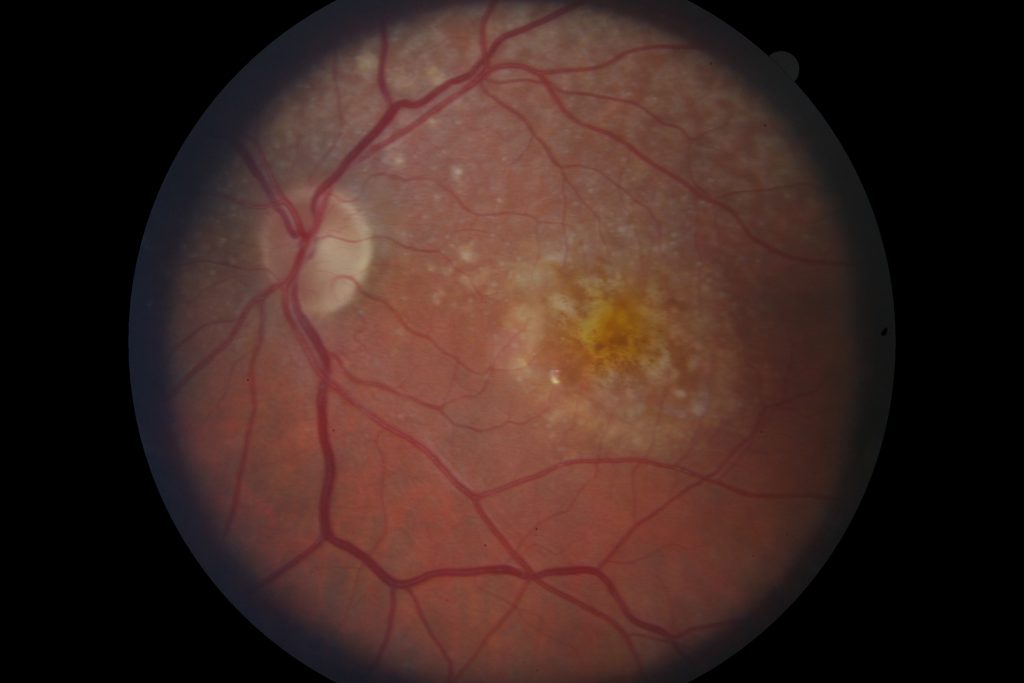
Retinal scan of dry macular degeneration
Lastly, macular degeneration is the primary culprit for blindness in adults over 50. While these patients never go completely blind from the condition alone, it certainly devastates their independence. There are two versions of macular degeneration: wet and dry. At Visionary Eye Care Center, we diagnose and manage both conditions with help from our local retinal specialists.
It turns out the advice of “don’t stare too long at the TV” is still true, thanks to our phones and other electronic devices. Recent studies show that we blink less than half as often when looking at a screen, which can lead to dryness and eye fatigue.
Our Reno family eye care experts suggest that everyone, at any age, should practice the 20-20-20 rule when using a screen. Just looking at something 20 feet away, for 20 seconds, every 20 minutes, will help reduce the dryness and eye strain of computer vision syndrome.
Using proper eye protection outdoors is also important. UV rays are harsh on your eyes in the long term. Sunglasses work wonders to protect your eyes from the elements and reduce your risks of cataracts, pterygia and macular degeneration.
Lastly, a balanced diet that is rich in Omega-3s, Vitamins C and E, and zinc, can help combat age-related eye disease. These supplements are often used to combat the effects of dry eye and slow the progression of dry macular degeneration.
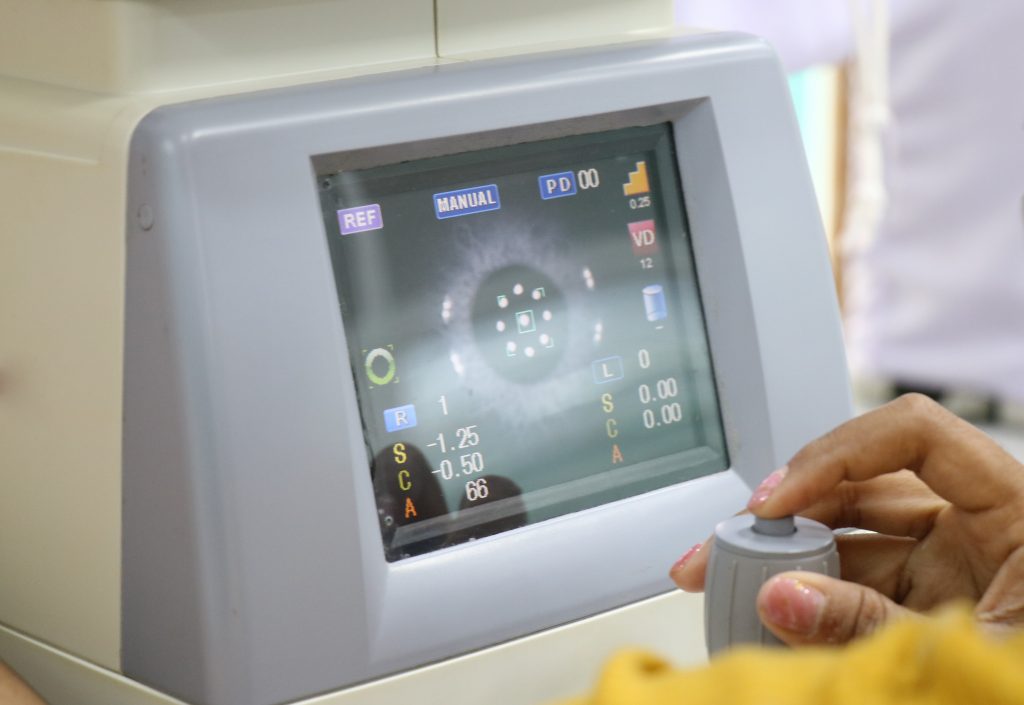
All in all, simple changes to your lifestyle and new habits will help prolong your eye health. If you’re experiencing changes in your vision or have questions about how to protect your eyes, make an appointment at our Reno optometrist office today.
Request an Appointment at Visionary Eye Center
It’s pretty painful to get a sunburn after missing a spot on your skin with sunscreen. Just imagine how a corneal sunburn would affect your quality of life during some of the best weather of the year. Also known as photokeratitis, this issue occurs during short-term exposure to high intensity UV-B rays. Photokeratitis is painful but temporary and is similar to a sunburn, but on your corneas (the clear portion of your eye in front of your pupil) instead of skin. It can look like a yellow, thickened area in the whites of your eyes. Too much exposure with ultraviolet rays can temporarily damage your conjunctiva, which is the clear layer of tissue covering the inside of your eyelid and whites of your eye.
Summertime activities that can put someone at increased risk for photokeratitis include mountain climbing, hiking, skiing, and swimming. It can also occur if you use sunlamps and tanning beds, or spend time in an environment with consistent UV light exposure.
There are two types of UV light proven to contribute to eye, skin, or health issues. UV-A rays can pass through your eye’s cornea to reach the lens and retina. UV-B rays can’t pass through glass but still can cause eye damage.

The symptoms of photokeratitis are pain and redness in the eyes, swelling, light sensitivity, headaches, temporary loss of vision, twitching eyelids, and seeing halos (like in the photo below). They can last from six to twenty-four hours but typically disappear after forty-eight hours.
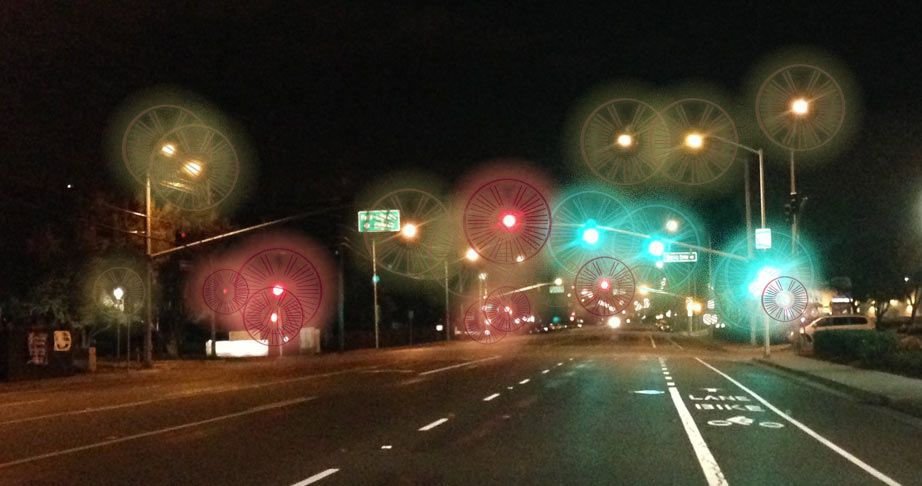
Photokeratitis is most often formally diagnosed after an eye exam, and your doctor will place drops containing a special dye known as fluorescein in your eyes to reveal any superficial irregularities on the surface of your cornea. As for treatment, go indoors immediately after experiencing symptoms and avoid bright lights. Once in a darkened area, place a cold washcloth over your eyes and take ibuprofen. If you wear contact lenses, remove them and use artificial tears to reduce discomfort.
The longer you were exposed to UV lights, the more severe the symptoms. Long term exposure to even the tiniest amount of UV radiation can increase the risk of developing a cataract or macular degeneration (an eye disease that leads to vision loss in the center), or cause tissue elevations on the surface. These conditions are known as pinguecula and pterygium, but can be prevented by wearing sunglasses.
If you wear contacts, ask about ones that absorb UV rays when working or playing in a sunny environment. But even with these types of contacts it’s still important to wear protective sunglasses to shield your eyelids and conjunctiva from the suns’ rays.

The good news is that photokeratitis is preventable simply by wearing the proper eye protection when outside, like prescription sunglasses or snow goggles in the winter. Glare from snow, sand, or water can cause burns to your eyes even if it’s overcast. A wide brimmed hat can help filter out the sun’s rays as well.
When purchasing a pair of sunglasses, it’s worth noting that not all sunglasses are polarized. Polarized sunglasses are manufactured in a distinctive way that creates a different pattern in the lens to block out more light than a usual pair of sunglasses. When choosing a pair, look for one that provides one hundred percent UV protection or UV 400 protection. Prescription sunglasses help with overall light sensitivity, headaches caused by glare, and regular eye strain from squinting in bright sunlight.
For more information, check out our other blog post on prescription sunglasses here.
Be sure to visit your eye specialist once a year to stay up on your eye health and catch any issues early. It’s never been a better time to make an appointment with the team at Visionary Eye Center to get the perfect pair of prescription sunglasses for your summer adventures.
Our Reno eye care facility is one of the best in preventing photokeratitis in our patients.
Schedule an Exam with an Eye Doctor in Reno
As the school year comes to an end, it’s important to make sure that your child’s eye health remains on track during the summer and beyond. Younger generations are more susceptible to myopia, which is caused by the lengthening of the eye from front to back. Consequently, light is focused in front of the retina and not directly on it, causing distant objects to be blurry. The best way to prevent child myopia from developing or worsening is to get them in to see a Reno optometrist who will create a treatment plan designed specifically for their eye needs.
Myopia is prominent in children today because of environmental factors ranging from poor lighting and not enough time outdoors to excessive screen time. Genetics also can play a role based on if both parents or only one is myopic. A fifty percent chance of myopia is possible if both parents have it, a thirty-three percent chance if one parent has it, and a twenty-five percent chance if neither parent is myopic.
Children who spend at least two hours a day outside with sunglasses on are less likely to become myopic. However, researchers found that once a child has become nearsighted, outdoor time does not slow myopia progression.
Myopia can put an individual at risk for complications like retinal detachment, glaucoma, cataracts, chorioretinal degeneration, and more as they age. It is definitely considered an epidemic with a forty percent diagnosis rate in young patients and climbing.
Another increasingly common issue in children today is eye turns, or strabismus. Known as being “cross-eyed,” it’s the result of excessive focusing. Sometimes it is a genetic issue in children, and other times it can be developed between the ages of one year to four years. We can detect and treat both of these issues with vision therapy and surgical treatments, all while ensuring you or your child have the proper depth perception.
The MiSight 1-day program is FDA approved and helps optometrists across the country change the futures of young patients on the road to myopia. According to CooperVision, the corporation behind the high-quality contact lenses, age-appropriate children wearing MiSight experience an average of 59% reduction in myopia progression during a three-year period. There’s also a 52% reduction in eye lengthening, and more than 90% of children continued to express a strong preference for MiSight 1-day contact lenses over their glasses at the five-year check-up. Their parents expressed the same sentiment as well.
We typically recommend MiSight for lower levels of myopia (approximately -1.00 or less), over alternatives like Ortho K for myopia control. If you’d like to learn more about the efforts to educate people and prevent worsening side effects of myopia, check out CooperVision’s Facebook page and YouTube channel.
Over half of the country’s eye care practitioners agree that if myopia is left untreated, it will lead to irreversible vision loss. After some time, detrimental diseases like retinal detachment or myopic maculopathy are possible. MiSight lenses accommodate a more active lifestyle, provide and correct distance vision immediately, and are comfortable at any age.
As a pediatric optometrist in Reno NV, Visionary Eye Center has plenty of experience helping children and even their parents navigate the different tests and procedures for evaluating vision and eye health. Here is a quick rundown of what some of the most common machines we use to treat myopia while lessening its side effects over time:
One of the machines our practice utilizes is the Zeiss IOLMaster for axial length measurements, as it’s the best way to monitor myopia progression. This equipment for ocular biometry measures the size of the eyeball, originally designed to calculate the dioptric power of intraocular lenses implants (IOLs) for cataract surgery, but is now used by leading myopia control doctors to track the growth of the eye.

This is something that can be easily monitored in children because when the elongation progresses beyond 26 millimeters, the risk of potential vision impairment increases dramatically. Even better, this machine is quick and painless – we can measure both of a patient’s eyes in less than a minute!
Measuring axial length is a vital measurement when looking at treatment, as using prescription alone is too variable. Unfortunately, many doctors haven’t equipped their offices with the technology at this time– but we have it here at Visionary Eye Center, setting us apart as experts treating myopia at a higher level.
Measuring axial length is also the only way to track myopic elongation in orthokeratology. Orthokeratology, or Ortho-K, creates specially designed corneal molds to considerably reshape the eye overnight as part of an FDA-approved process for all ages. Similar to how dental braces can reshape your teeth, Ortho-K processes help fix those refractive errors that cause myopia or hyperopia and astigmatism as well.

Topography maps are taken using our Keratograph 5M and are used for fitting contacts like MiSight, as well as dry eye testing with the Crystal Tear Report. It’s an incredibly helpful tool for the diagnosis of and education about dry eye. As an advanced corneal topographer, the Keratograph can examine the meibomian glands in infrared imaging and evaluate the tear lipid layer. The Keratograph is effective in measuring the tear film break-up time and the tear meniscus height measurement in a non-invasive, painless way for patients.
The Maestro is used for the screening of glaucoma, cataracts, diabetic retinopathy, and macular degeneration. Taking a look at a patient’s retina, optic nerve, and anterior segment of the eye is a much quicker practice than before. Using Maestro technology allows our Reno optometrist to rapidly and clearly analyze various functions and facets of the eye for the most reliable results.
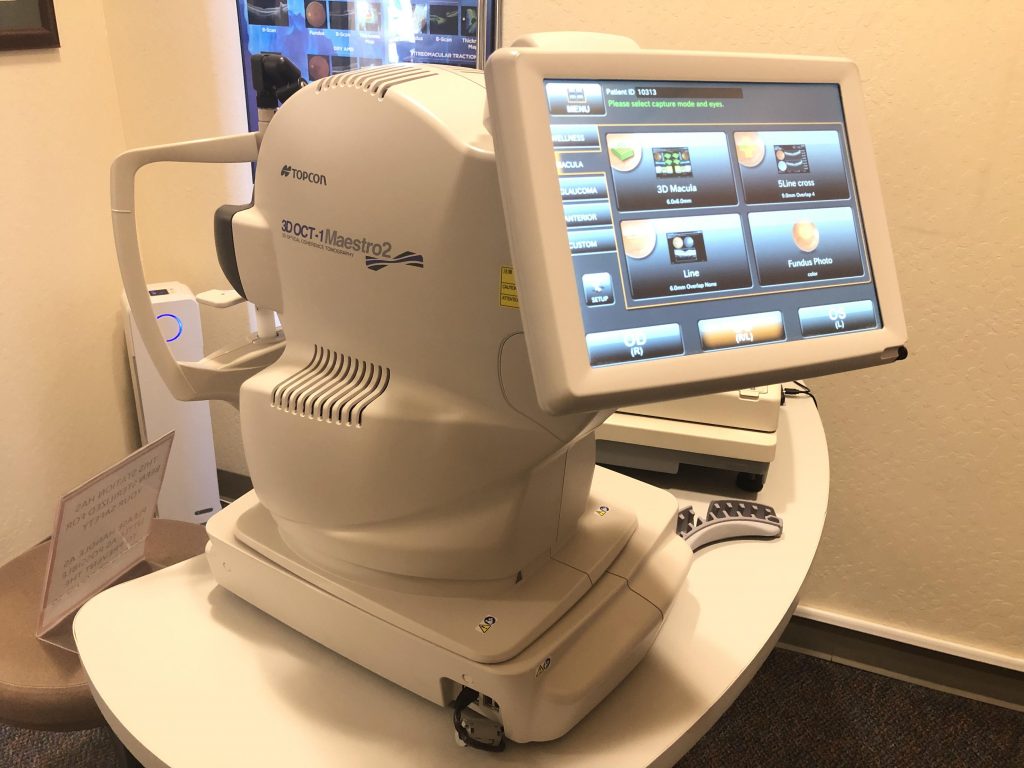
The team frequently relies on Pentacam technology to custom design gas permeable (GP) and scleral contact lenses. Gas permeable contacts are made of firm, durable polymers with high oxygen permeability. High oxygen permeability helps keep eyes healthy with orthokeratology for myopia control or scleral lenses. The Pentacam allows our Reno optometrists to create a 3D model of the front surface of the eye which can be used to design highly customized contact lenses.
All in all, we strive to have the best technology for our patients and the services and scans provide vast treatment options. If you’re struggling with myopia, dry eye, or the after-effects of either of these conditions, Dr. Jason Bolenbaker is here to help.
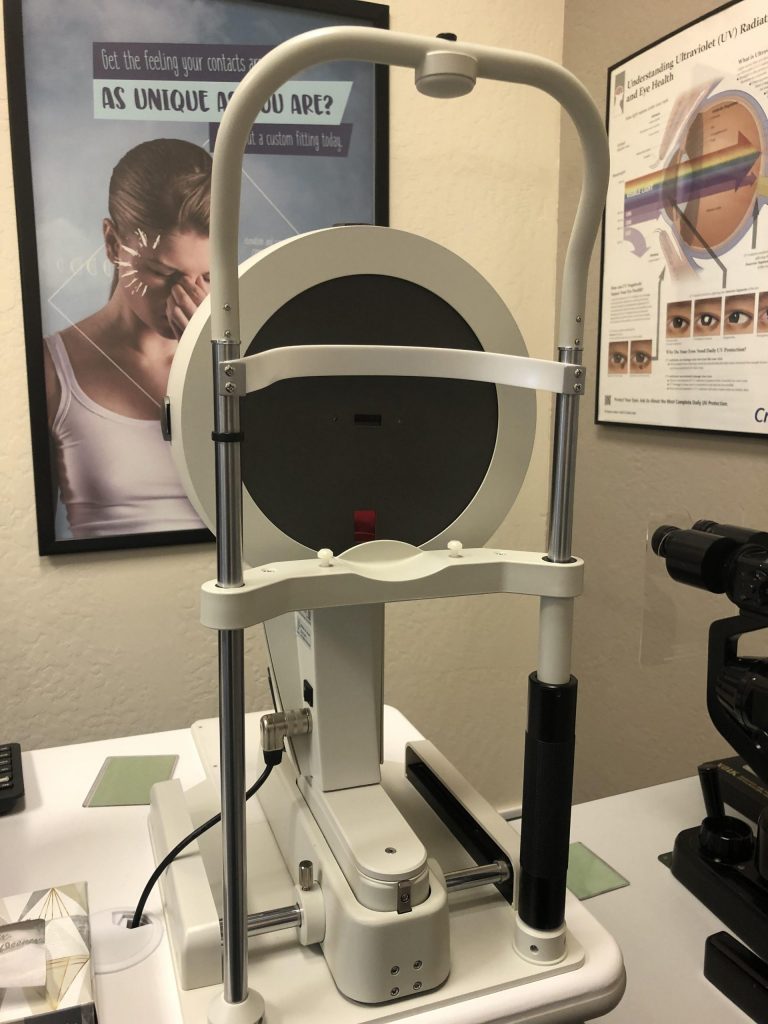
All in all, we strive to have the best technology for our patients and the services and scans provide vast treatment options. If you’re struggling with myopia, dry eye, or the after-effects of either of these conditions, Dr. Jason Bolenbaker is here to help.
The MiSight program is just one of the ways we reach our goals based on our philosophy of how an educated patient makes better health decisions for their families. We want our patients to be educated on every treatment option offered to them, and make the best choices for their care.
Our team of optometrists in Reno is ready to help patients of all ages begin their eyesight correction journey and prevent any further issues. Contact the Visionary Eye Center today and make an appointment with a medical care team you can trust.
March is National Save Your Vision Month, so what better time to schedule your annual eye exam. With Spring Break quickly approaching, it’s the perfect time for the whole family to see an optometrist in Reno. Dr. Bolenbaker and his team at the Visionary Eye Center look forward to meeting you and your family and taking care of your eye vision needs. As the best eye doctor in Reno, we offer pediatric eye care services to ensure that your child is developing proper depth perception, essential binocular skills and more.

Preventative eye care is important because eyesight is one of the most important senses. Eighty percent of what we perceive is because of our eyesight, so protecting your eyes will reduce the chance of blindness, vision loss, and long term eye diseases like cataracts and glaucoma. Vision disability is one of the top 10 disabilities among adults 18 years and older, and is one of the most prevalent disabling conditions among children. Because of our aging population, the CDC reports that the number of visually impaired individuals in the United States will double by 2030 and triple by 2050.
Other reasons to see an eye doctor in Reno include getting assistance with any decreased vision, eye pain, or double vision issues. We strongly encourage people to take care of their vision health, and the first step to it is making sure to schedule an annual eye exam. Visionary Eye Center can offer these important services in addition to exams:
Take care of your eyes and correct mild cases of farsightedness and presbyopia by beginning the safe processes of orthokeratology, myopia control, and more at our center today. The Lasik procedure is a great refractive practice to help with easily fixing any vision issues too.
Our Reno family eye care center is also one of the only low vision specialty clinics around, and there’s nothing more enriching than helping the partially sighted regain their independence.

We want the Reno community to be well informed on the best eye health decisions all year round. We offer several services for your eye health, whether it’s dry eye care, contact lenses, or myopia control. Don’t put off something as important as preventative eye care. The team at Visionary Eye Center are Reno optometrists with plenty of experience. Click here to schedule an appointment today. Please don’t hesitate to contact us with any general inquiries or concerns, and we look forward to meeting you!
Keratoconus may not be a familiar word for many people, but the disease affects a large number of eye care patients. Keratoconus (KCN) is a progressive eye disease that causes complications with the cornea. It results in vision problems that range from mild to severe and will likely require some form of corrective methods to improve the person’s ability to see.
Through years of research, professionals have been able to determine generally how many people have keratoconus, and the results are surprising. Since a 2017 study performed by Dr. Daniel Godefrooij, it was found that KCN affects roughly 5-10 times more patients than the original findings suggested. Let’s take a deeper dive into what keratoconus is below.
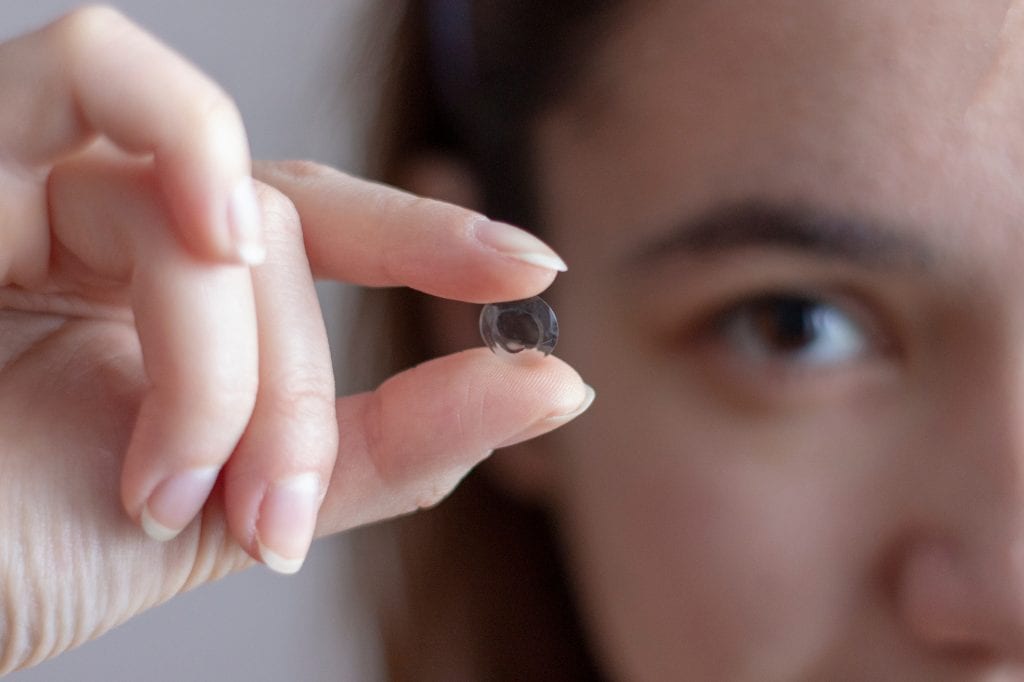
As stated above, keratoconus is a progressive eye disease that can impair a person’s vision and significantly affect the cornea. For patients with keratoconus, the cornea in one or both eyes becomes thin and scars in the center. Specifically, keratoconus involves the central portion of the cornea, which affects a large portion of the eye. The result is a noticeably protruding cornea that has an irregular conical shape followed by poor eyesight.
It’s typical for keratoconus to become present during puberty, or a person’s teen years, and worsens or progresses over time. By the 5th or 6th decade of life the disease will stabilize, but typically a patient with keratoconus will experience irregular astigmatism or scarring that might not be treatable by corrective lenses alone. In the worst cases, a patient may require a corrective procedure known as a corneal transplant.
Originally, research done in part by NKCF (National Keratoconus Foundation) suggested that 1 in 2,000 people were diagnosed with KCN. Years later in 2017, these numbers were questioned by Dr. Daniel Godefrooij who determined that these rates are significantly higher than what was traditionally found. When determining how many people have keratoconus, LASIK (laser in situ keratomileuses) eye surgery played a critical role.
LASIK is a popular method of vision correction that uses lasers to correct the refraction of eye lenses for patients suffering from myopia, hyperopia, and astigmatism. With the increased popularity of LASIK therapy came the realization that keratoconus affects more people than had been previously reported.
Today, Dr. Daniel Godefrooij reports the ratio of people suffering from KCN being 1 in 375. That’s more than 5 times as many people as researchers had originally found.
The cause of KCN is still mostly undetermined, but the development and progression of the disease have been heavily studied over time. Some research has suggested that chronic rubbing of the eyes may contribute to and possibly expedite the overall progression of the eye disease. The most common symptoms of keratoconus to be aware of include:
The plan of treatment for keratoconus will depend on the severity of the patient’s condition. Of utmost importance is early detection, as a recently FDA approved treatment called corneal cross-linking is now available to stabilize the condition. Mild KCN may be treated with the use of corrective lenses, such as eyeglasses or contact lenses. Moderate cases will likely require specialty contact lenses like gas permeable (GP), hybrids or scleral lenses to provide acceptable vision. However, severe forms of KCN may require more aggressive treatment methods such as a corneal transplant or Intacs Corneal Implants.
Keratoconus treatment focuses primarily on slowing the progression of the disease and improving vision. Essentially, there are three types of treatment to help with KCN symptoms which consist of corrective lenses, therapy, or surgery.
If you’ve been experiencing vision problems, it’s important to meet with your Reno optometrist to properly diagnose the issue at hand. You may be suffering from keratoconus and not even realize it. A licensed, trained optometrist can evaluate your vision problems, assess your eye health, and provide an effective method of treatment.
It may be necessary to consider eye surgery and specialty contact lenses to correct your vision problems caused by keratoconus. Dr. Bolenbaker at the Visionary Eye Center can help to develop a unique treatment plan that’s designed to suit your eye care needs.
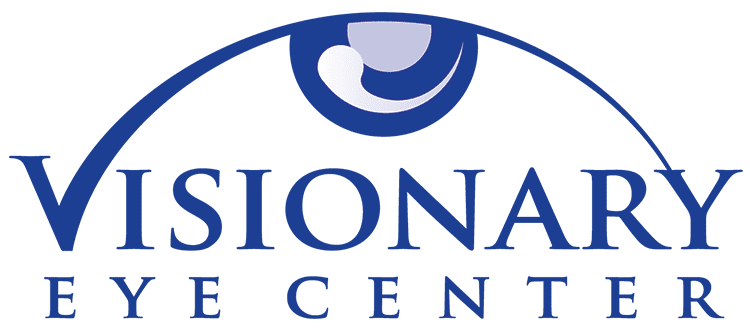 775.827.1100info@visionaryeyecenter.com8175 South Virginia Street Suite B-900
775.827.1100info@visionaryeyecenter.com8175 South Virginia Street Suite B-900